Simple rules that will help you when driving in the snow. Not everyone follows them
Here are the basic rules when driving in the snow
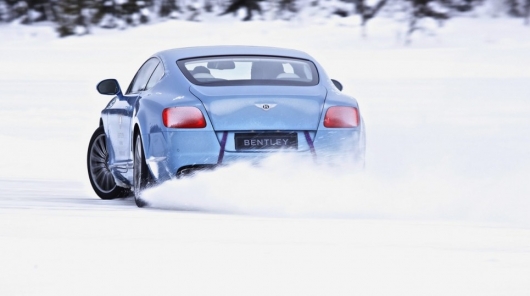
In most regions of Russia the snow is long makes us forget that on the street in the middle of the Russian winter. In recent years, the winters become snowy again, which, of course, is not pleased with public utilities, which are struggling to cope with the blocked roads. Unfortunately, winter time is always associated with the number of accidents on Russian roads. And the most frequent causes of accidents are inexperience and inattentiveness of drivers. But each of us can significantly improve your winter driving. To do this, just not to forget some of the most important rules which can save you from vehicle damage or a serious accident. And most importantly – you don’t need to be an experienced or professional driver, to apply simple tips into practice.

You don’t need to be a master of driving, supersonicos, professional drifter or an instructor in defensive driving to survive this winter, not ending up in a ditch or in the ditch. The main thing is to be careful while driving. It may any driver. Of course, drivers who have good driving technique, are less likely to be in an accident. Nevertheless, you should know that even professional race car drivers are not insured to 100% of the accidents on normal roads. However, to master the five basic rules of driving on snow and ice it is easy that will greatly enhance your security, bringing it closer to that level, who have professional, experienced drivers. Here are the rules.
1. If your car has anti-skid system, keep them
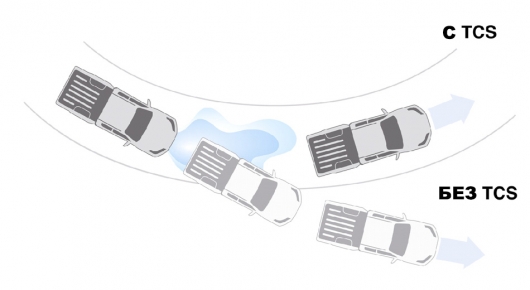
If your car is equipped with stability system (ESP –electronic stability control vehicle) or a traction control system (Tractioncontrol system, TCS), keep them in the snow. Yes, car manufacturers usually provide for disabling those systems using the buttons. In the end, many people think that when driving in the snow they can and should be disabled. But it’s not. It all depends on the terms of your movement and speed. In fact, the ability to disable the ESP system and TCS is needed to prevent getting stuck in the snow or difficult terrain. In this case, it is better that the wheels do not slow down electronics, and power are suppressed by the electronics. In other cases disable security is not necessary.
According to instructor defensive driving, Sergei Golovin (driving school Sprinter), good drivers don’t need different systems of care. But this does not mean that we have to drive with the disabled electronics. It’s like a professional driver to drive in winter on summer tires. Agree, nonsense. So the best right decision for all drivers, with different levels of training and experience, will take full advantage of the car electronics, especially the newest systems such as the ESP system with torque vectoring, which is better than the old system, helps the movement with understeer.
2. The harder you press the brake pedal, the more effective will stop in the snow
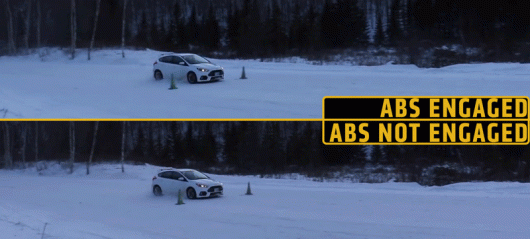
Today, almost all cars on the road equipped with ABS system (traction control braking), which in its time has revolutionized the auto world. Unfortunately, this system, though prevented since its introduction a million accidents and reduce serious consequences of accidents, nevertheless failed to help drivers on the road. First and foremost, blame the drivers who never overcame the fear in case of danger, push the brake pedal to the floor, holding it until the car stops. That is why the ABS system was replaced with the BAS (brake assist system), which in case of sudden pressing of the brake pedal automatically increases the pressure in the brake pedal to shorten the braking time of the vehicle. But, unfortunately, this system rarely works effectively on snowy and icy surface, what many drivers forget.
So there is no need to rely on new-fangled system of care. And no need to be afraid to press hard the brake pedal if your vehicle is equipped with an ABS system. The only way you will be able to use the full potential of the braking system and tires and be sure that your car brakes with maximum efficiency.
By the way, many drivers are “older” claim that it is not necessary to press strongly a brake pedal when you drive in the snow. However, they are wrong, if we are talking about a car with ABS system.
It is also important to choose a good optimal area for braking. For example, be careful when braking into a rut of snow, which is very convenient to go on a snowy road. The fact that the track in the winter substrate is formed with tight adhesion. It is a highly condensed, very slippery snow and often compressed ice. If you want maximum braking performance, better to leave the track and then slow down in the snow. Don’t forget that winter tires will do better in loose snow than on ice or Packed snow.
3. Braking only in a straight line
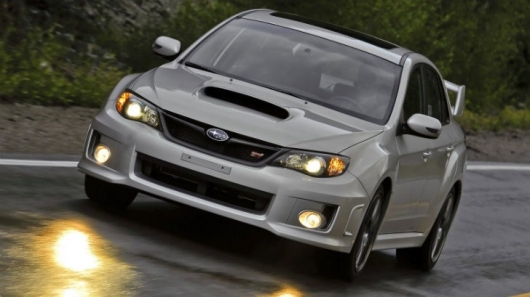
If you are driving on a snowy road and approach a turn, brake early, even if you drive at a safe low speed. Braking before the turn straight makes your lower speed is safer. Remember that when you are driving, your car will be more stable due to better traction, which is easily lost when driving in the snow.
4. Turn without gas and brake
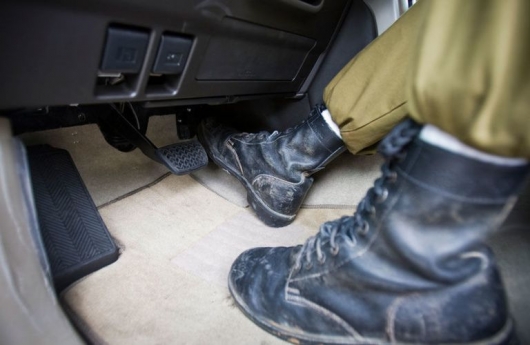
The overcoming of turns on the winter road in many situations can be quite stressful and dangerous. Especially when driving in the snow, when it is easy to lose grip, which in turn will lead to loss of vehicle control. That is why it is so important to perform step 3 of our tips on using the brake pedal only when driving in a straight line. Braking while turning may cause the appearance of understeer. This in turn can lead to the exit track in turn. Including could lead to the exit of the car into oncoming traffic.
Turn, covered with snow or ice needs to be overcome is moderately pressed the gas pedal. If you feel that the car does not turn as it should, remove your foot from the gas pedal.
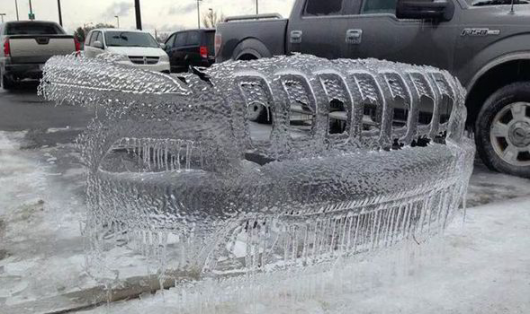
In any case, do not add gas in the turn when driving in the snow. So you can easily deprive the wheels of the car of grip, leading to understeer the car, equipped with front-wheel drive, or oversteer in a car with rear wheel drive.
Avoid pressing the gas pedal in the turn. When driving on dry asphalt the throttle in a turn is not as dangerous as when driving on slippery surfaces.
5. The right turn … straightening wheel
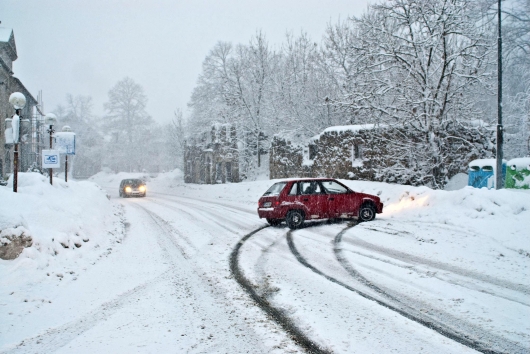
If you feel the wheels slipping on a bend the car loses grip and can stay on the road, do not fit into the rotation. In this case, you have to align the wheels to stop turning. Otherwise, you will only aggravate the car slide. Unfortunately, what to do in such a situation, I don’t know many drivers because it is usually not taught in driving schools. Usually, in this situation, many drivers reflex continued rotation of the machine, increasing the angle of rotation of the wheels, which ultimately leads to a drift car.
But you will be surprised how it changes the behavior of the machine when the slippage of the front wheels to turn when you begin to align the wheels, reducing the turning angle, thereby preventing slippage of the front axle of the machine. This is due to the fact that the tires have the most grip when they roll straight. But the more you turn, the less traction.
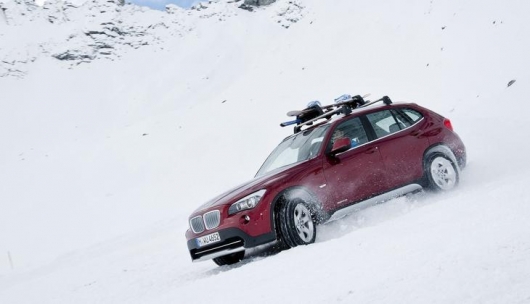
The decrease in traction with the snow-covered surface will always appear, if you turn too fast. Regardless of the type of drive. Straightening the wheels to reduce the turning angle, can reduce the slippage of the wheels.
If the reduction of the angle of rotation does not help, then you should remove your foot from the gas pedal and, of course, start braking. This should be done when you are sure that you will not be able to exit. Some drivers often suggest for braking use the manual brake (handbrake) or, conversely, to add momentum to the engine by pressing the gas pedal harder. And I must admit that in some cases it can really help. But there are a few “buts”:
- not every driver can master this technique
- not every car this will work due to the ESP system
- it is not always possible due to the ratio speed/adhesion
- better to get out of a difficult situation on the road at a slower speed than on the big
In conclusion, I would like to note that if you don’t feel like a great driver, that doesn’t mean you can’t use the above techniques and rules. They should be mandatory for all drivers. Including for those who are just learning to drive. I would like to tell you about the second and fifth paragraphs in our councils. All that in them is described, should develop you as a reflex, which, of course, is not easy. But nevertheless possible. If you looking for a way to gain experience and instinctively and subconsciously learn to react quickly to unusual situations on the winter road, sign up for courses defensive driving.
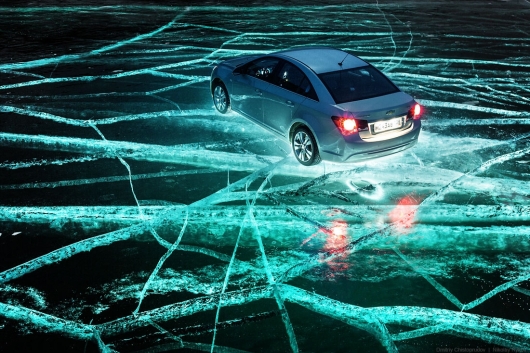
Also force yourself to follow all the rules and tips which we have told you above. Remember that the more carefully you follow these rules, the safer will be your drive in the winter. And don’t forget that winter riding is not fun.
